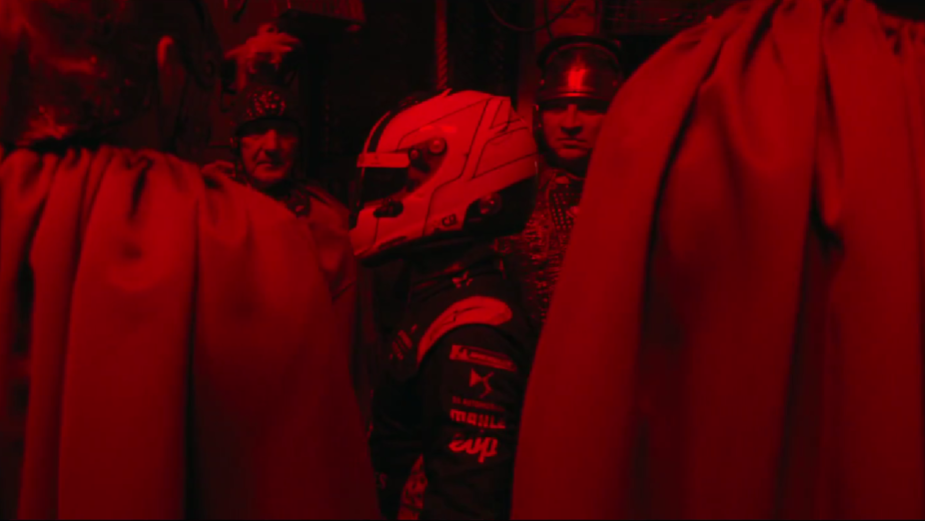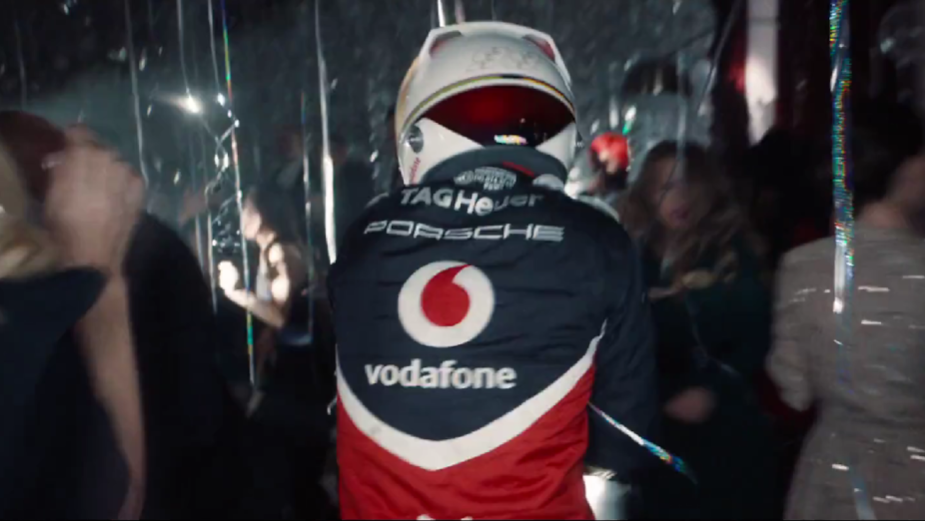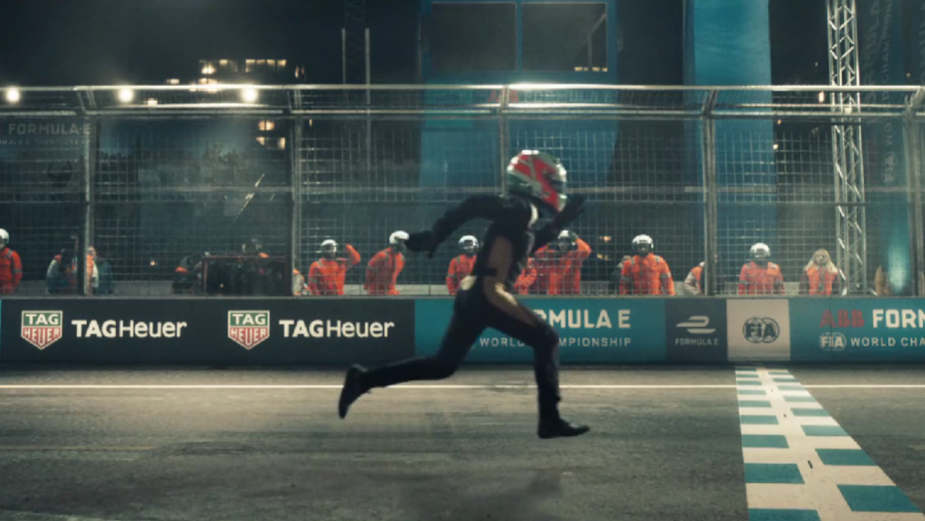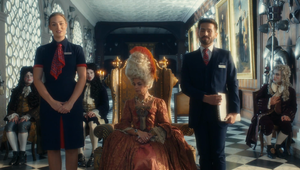
Crafting Formula E’s Fast-Paced, Action-Packed Campaign

Formula E and Uncommon, alongside Pulse Films, Rascal Post and Soundtree, create ‘No Turning Back’ to capture Season 8 of Formula E. Setting the tone for Season 9’s Gen3 - the fastest, lightest, most powerful and efficient racing car to take part in Formula E - the fast paced campaign captures all the excitement of the sport.
It begins with a race between Sam Bird, António Félix Da Costa and Pascal Wehrlein, who battle for the number one spot on the track. As António seizes the opportunity to overtake, the drivers crash in an explosive moment that highlights the impact of motoring on climate change. Much to the viewers surprise however, Da Costa crawls out from under his car and carries on the race, running towards the finish line. As the other drivers join him, they run through all of the sport’s hosting cities and wind up near the finish line, where we’re left with the ‘who will win?’ cliffhanger.
Pulse Films’ director Sam Walker, Rascal’s lead 3D designer and EP, Russell Tinker and James Beck, and Soundtree’s composers Joel Hartman and Luis Almau talk LBB’s Nisna Mahtani through the campaign’s creation.
LBB> What was the initial conversation behind celebrating Season 8 of Formula E?
Sam> The initial brief was to launch Season 8 and to build on the ‘Change. Accelerated.’, positioning Uncommon created with Formula E last year. Until very recently Formula E was the only electric motorsport in the world. It truly is a pioneer, and we wanted this film to reflect that. In the race against climate change, there can be no turning back.
Russell> We were to source the racing footage from the Formula E archive and use it in the edit where we see the cars. As discussions developed with Sam, the job developed into a bigger idea with CGI cars replacing the stock footage with shots of the grandstands, track and background included.
Luis> We discussed music pre-shoot. Sam wanted to have original music to cut with, so we started composing inspired by the script and our conversations with Sam. We discussed Drum n Bass, or something with a similar intensity, as a good way to drive the film.
Joel> There was also an idea that the music at the different cities could be diegetic music from those places. The track needed to be intense, powerful, unapologetic and dangerous.
LBB> How did you land on the concept and what was something you were eager to include in the final piece?
Sam> It is a metaphor for the race towards an electric future but we didn’t want it to be preachy or too worthy. First and foremost, this is a high adrenaline sports film that heroes, not just the high-speed racing, but also the determination and fearlessness of the drivers too. The idea was to start the film where most films end, in the middle of high intensity action culminating in a horrific crash, but then what if the drivers emerge from the wreckage and continue their race on foot across the city, the ultimate allegory for the drivers’, and the sport’s, determination to succeed.
Formula E is building a confident aura around itself and this film aimed to match that ambition. It needed to be defiant and unapologetic. And all credit to Formula E for backing the boldness of the scenes from script stage right through to the finished film.
LBB> It was a large-scale production to get this campaign created, with vehicles, combat scenes, horses, etc. What was the most difficult aspect to execute and how did you overcome the challenge?
Sam> Every scene had its challenges, the biggest of which was the volume of scenes we were trying to fit into four-night shoots. There weren’t any quick or easy scenes to shoot, with each one needing to have a defining image; a rearing police horse, a crashed FE car, a glitzy fashion party, a fight scene, smashing through a restaurant window, or the Roman neon corridor. If it wasn’t action, it was scale, if it wasn’t scale, it was lighting and performance.
Any one of these scenes could have been a two-day shoot in itself under normal circumstances but we all felt the film needed a variety of cinematic textures to keep the audience’s attention and hopefully keep them guessing until the end. So once we’d mentally committed it was a case of working out a plan to give us the best chance possible of doing what we needed to do.
The most challenging part was creating something that felt visceral and violent without showing any actual violence.

LBB> The shoot took place across four days. What was key in making sure you got everything you needed within the timescale?
Sam> The key to doing anything of this scale on a budget like this is getting the best team you can around you, and then prep, prep, prep, so that everyone totally understands what the plan is, at all times, no matter what happens. The more we talk about what we’re trying to do, and the more we develop a common language, the more efficient it becomes. It also takes trust from brilliant clients.
LBB> The contrast between light and dark shadows, and the vibrance of colours gives the campaign a fantastic ambience that contributes to the mood of the piece. How did you achieve this?
Russell> Formula E races on street circuits and for night racing, a lighting gantry encircles the track. The quality and quantity of light the drivers need to race at night creates a large difference in exposure between the track and the surrounding city, almost theatrical - an illuminated stage in a dark theatre.
The first step was to collect and study references in collaboration with the Director, DOP, and Art Dept. This informed the set build and the lighting scheme on set in Kiev and also our CGI.
LBB> You use a specially created Drum n Bass piece to support the campaign. How did you land on this genre of music and why does it work so well?
Joel> I think Drum n Bass works well for the film because it has the pace, excitement and aggression to complement some of the imagery but it can also incorporate softer more emotional elements too, which help with the storytelling. It can go big and it can go small.
Also, the main beats and rhythms have a human feel to them which compliment the humanness of the ‘running’ drivers in the race, as opposed to using a purely electronic score.
Luis> It doesn’t let up. When you hear that recognisable beat, you think you know the kind of track you’re about to hear. So it’s all the more surprising when we suddenly flip it on its head for certain moments, bringing in some emotional strings or a beautiful acapella vocal.
LBB> The music really adds a dramatic effect, excitement and anticipation. Can you talk us through creating the unique sound?
Joel> The framework and common thread through the film is the Drum n Bass track which comprises of fast paced and aggressive drum and bass sounds. This was used to add the tension and excitement. But we also wanted to be able to break away from that to highlight more emotional and beautiful moments of the film. This required a more score-like approach and use of more score-like instrumentation such as distorted horns, strings and human voices.
Luis> We also brought in sounds that you wouldn’t normally find in this kind of music, which were informed by the story. So for instance when the horse goes up on its hind legs we grabbed a horse neigh and manipulated it to create a really aggressive scream type sound.

LBB> How did you use the post production process to merge all the various aspects of the campaign together such as the raw footage, VFX and sound?
James> The CG obviously had to be spot on in the look and feel down to the last detail as the edit is intercut with the real footage of the cars themselves. In addition to the cars, the details that also needed to be very accurate were the environment - the billboards, the texture of the track, the grandstands and most importantly the lighting. Getting these lit in a way that would be sympathetic to the live action part of the edit was a real challenge given these shots took place at night.
LBB> Were there any unique challenges you faced during the post production / sound composition process and how did you overcome them?
James> There were many. As quite often in post production, time is usually against us. We had to be smart in the way we approached the three minute edit as there was quite a lot of heavy lifting in a number of areas.
Russell> For the CGI car sequences, Unreal Engine offered us several advantages. With Unreal's game creation tech, we built bespoke tools to procedurally build the track, rumble strips, lighting gantries, advertising hoardings etc. With the speed of the real-time render engine, we could generate multiple views of the animation, sort of 3D rushes that we supplied to the offline edit. And, using Unreal's new rigging tools the cars were rigged and animated in Engine rather than jumping between apps.
Luis> My main concern was ensuring that the track remained authentic, as often in the process of making music fit to picture it can start to fall apart and lose its edge. This had to help tell the story but at the same time feel like all those moments of sync were almost fortuitous.
Joel> The main challenge in the composition process was to create a Drum n Bass track that could match the many moments of the film, whilst maintaining a common thread. Also, a track that could accentuate the various points of the film with different emotions. Using the Drum n Bass track as the main spine to the film and deviating away from this into moments of the score was the method we used to overcome this potential hurdle.
LBB> What was the most significant aspect in ensuring the film felt cohesive and flowed as one piece?
Russell> I think the edit has a crucial role in controlling the flow. Hopefully, our broad coverage of the action helped with the shot selection. Some interesting shots didn't make the cut but it's not about individual glory, our work needs to support the story as a whole.

LBB> Were there any funny or memorable moments on set that you can tell us about?
Sam> There was a lot of pressure on the rooftop scene from as soon as we started trying to schedule the job purely because of timings. It just never seemed to quite fit in. And then on the shoot day, it was minus five and blowing a blizzard and almost impossible to shoot at all, but once we got up there and cleared the snow from the roof it was all worth it. I think in the end it’s my favourite shot in the whole film.
LBB> Would you like to share anything else?
Russell> On a night shoot in Kiev? Then there’s a great place for coffee and breakfast pizza - for those afternoons after. ‘Mimosa
Joel> It was a very collaborative process from start to finish and I feel we have ended up with a really strong piece of work due to the visuals and music informing each other throughout the journey.
Sam> Thanks once again to Nils and the incredible team at Uncommon, producer David French and EP Lucy Kelly at Pulse Films, DoP Stuart Bentley and Alex Barber, Barnsley Wood and Russell Tickner at Rascal Post, Joe Guest at Final Cut, Jack Sedgwick at King Lear, and Luis Almau and Neil Athale at Soundtree. And of course, the amazing team at Formula E. An exceptional team and a pleasure to work with.













